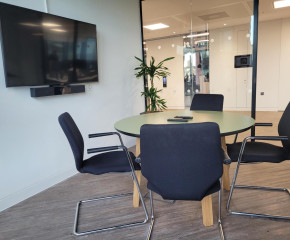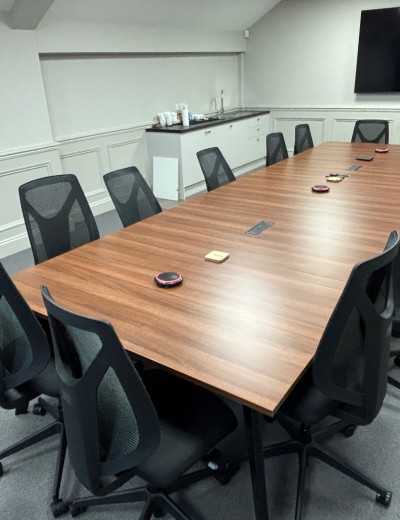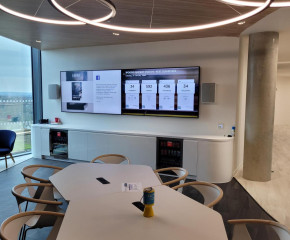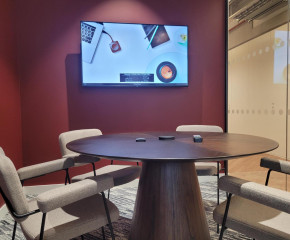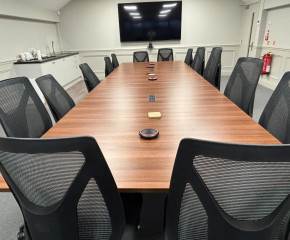The secrets of successful meeting room AV design
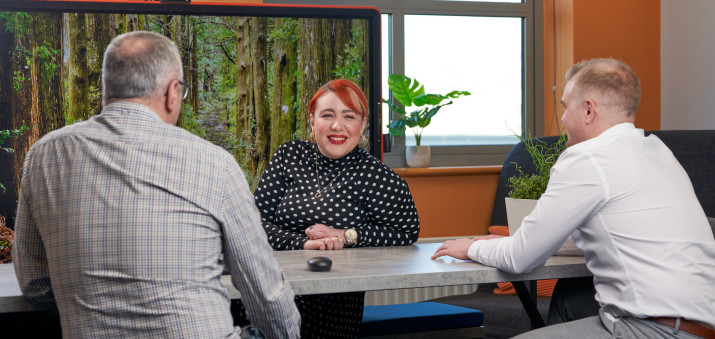
We’ve all been there—a meeting where the audio cuts out or the video keeps freezing. It’s frustrating, right? This is where audio visual (AV) solutions can make all the difference. They ensure your team can communicate effectively and maintain productivity, whether they're in the room together or working remotely.
But it’s not just about the technology itself. You need an AV setup that works for your team’s needs and fits your space. So, let’s dive into what makes a successful AV design and how you can create meeting rooms that work for everyone.
Why AV Design Matters for Your Meeting Rooms
Meeting rooms are more than just spaces for conversations; they’re where decisions are made, ideas take shape, and teams solve problems. With the right audio visual solutions, even a basic meeting space can become a hub for effective communication.
Aligning Spaces with Needs: Designing for Efficient and Flexible Meetings
When designing meeting spaces, start with the people using the space and their specific needs. Your company’s unique workflows and meeting styles should drive your technology choices. Ask yourself:
Do we need a setup for large all-company meetings, or are most gatherings small, collaborative groups?
Should the space be flexible enough to adapt for various meeting types?
Are our meetings in-person only, or do we have remote team members?
What’s the primary purpose of the room? Is it for presentations, collaboration, or video conferencing?
Do we need to integrate existing platforms like Microsoft Teams or other collaborative tools?
Once you’ve answered these questions, you can assess how to configure your spaces to support efficient, productive meetings.
Choosing the Right AV Setup for Your Rooms
Each room requires a tailored AV setup based on its size and function. From small huddle spaces to large conference rooms, your AV setup needs to ensure smooth and productive meetings every time.
Small huddle spaces can operate smoothly with simpler setups, like integrated microphones and cameras. In contrast, larger conference rooms benefit from sophisticated conference room AV equipment, such as beamforming microphones that pick up voices throughout the room and PTZ (pan-tilt-zoom) cameras that zoom in on the speaker, making sure everyone is seen and heard clearly.
Investing in high-quality conference room AV equipment helps eliminate common meeting frustrations like poor sound quality or missing video feeds. The result? Meetings run more efficiently, and communication is crystal clear.
Implementing Effective Meeting Room Conferencing Solutions
With hybrid meetings becoming the norm, reliable meeting room conferencing solutions are essential. These solutions go beyond basic video conferencing capabilities; high-quality AV systems are necessary to ensure remote participants can engage as effectively as those in the room.
The best meeting room conferencing solutions integrate seamlessly with platforms like Microsoft Teams Rooms or Zoom Rooms, providing consistent and reliable experiences regardless of where participants are located. Robust audio and video setups ensure every participant feels connected, making meetings more inclusive and productive.

Tailoring AV Solutions to Room Size
Different meeting rooms have different needs. Here's how to ensure your AV setup fits each space:
Small Huddle Spaces
In smaller rooms, like huddle spaces, simplicity is key. These rooms often work best with built-in microphones and cameras that cover a small area effectively. Wireless presentation systems are also a great addition to remove the hassle of cables, letting teams focus on collaboration instead of technology.
Medium-Sized Meeting Rooms
Medium-sized rooms require more robust AV solutions. These spaces often benefit from tools like PTZ cameras and beamforming microphones to ensure everyone in the room is seen and heard. Adding interactive displays or wireless presentation systems can also enhance collaboration, making these rooms more dynamic for both in-person and remote teams.
Large Conference Rooms
In large conference rooms, the need for high-quality conference room AV equipment is critical. You'll likely need multiple displays to ensure everyone can see the presentation, as well as advanced audio systems to ensure voices are clear and carried throughout the room. AI-powered cameras that track the speaker's movement and follow the conversation in real-time are essential in these bigger spaces, especially for remote participants.
Future-Proofing Your AV Solutions
As your business evolves, so will your AV needs. That’s why it’s important to invest in future-proof AV solutions that can grow with you. Whether you’re adding more meeting spaces or adopting new technologies, having flexible, scalable equipment ensures you won’t be left behind.
Look for AV solutions that integrate seamlessly with future technologies and platforms. Systems that support updates and are easily expandable will save you time and money in the long run. Make sure your meeting room conferencing solutions are built to handle the latest innovations in remote collaboration and video conferencing, so you're always prepared for the future.
Consistency Across Your Meeting Rooms
A consistent AV experience across all your meeting rooms is key to smoother operations. Whether you’re in a small huddle space or a large conference room, the technology should be familiar and easy to use. Standardising your equipment—whether it's control panels, cameras, or microphones—means your team won’t have to waste time figuring out how to connect every time they move to a new room.
This consistency not only reduces downtime but also builds confidence across your team, knowing they can rely on the technology in every space.
Why AV Design is Critical for Your Meeting Rooms
A well-designed AV setup is more than just about adding flashy gadgets—it’s about creating a space that works for your team. Whether it’s a quick chat in a huddle space or a high-stakes meeting in a large conference room, having the right conference room AV equipment and meeting room conferencing solutions ensures that everyone can communicate clearly and stay focused on the task at hand.
At AuDeo, we specialise in creating audio visual solutions tailored to your business needs. Whether you're upgrading your conference room AV equipment or looking to implement more efficient meeting room conferencing solutions, we’ve got the expertise to help you design a future-proof setup that keeps your team connected and productive.
Ready to enhance your meeting rooms with the best AV technology? Get in touch with AuDeo today, and let’s design a solution that keeps your team connected, productive, and future-ready, whether they’re in the office or working remotely.




